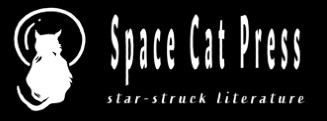At a time when climate change challenges to our planet are starkly evident, it’s good to be reminded of what humanity can achieve when we build on shared scientific knowledge. The European Space Agency’s Rosetta mission 2004-16 showed what was possible with transnational co-operation and some ingenuity. Next month Space Cat Press will celebrate this mission with a collection of poetry and prose called ‘ROSETTA: Voyage to a Comet’s Underworld’. The book will launch at the British Science Festival 2022 in Leicester.

Credit: ESA/ATG medialab; Comet image: ESA/Rosetta/NAVCAM – CC BY-SA IGO 3.0
Our Space Cat author, Siobhan Logan, recalls some of the things that most impressed her about ESA’s 12-year mission to chase and study a comet:
The storytelling – ESA’s mission was named for the famous Rosetta stone that helped archaeologists to decipher Egyptian hieroglyphics almost 200 years ago. ESA went on to name the spacecraft’s instruments and comet’s regions for Egyptian gods and places. They used narrative to engage audiences far beyond the scientific community.
The social media – ESA’s award-winning media campaign enabled everyone from astronomers to children to amateur enthusiasts to share in the unfolding adventure. There were weekly blogs, tweets from its Philae lander, animations and more. No wonder artists, musicians and writers all found inspiration in Rosetta’s voyage.
The engineering – Rosetta was the first spacecraft to orbit a comet and set a lander on its surface. The landing of the Philae module was an incredible feat, given the comet was spinning at 40 times the speed of a fired bullet. An array of instruments aboard the Rosetta spacecraft were then deployed by scientific teams across Europe throughout the mission. So a miracle of co-ordination too.
The stark beauty of comet 67P’s rocky wilderness, captured up close by Rosetta’s camera system and beamed back to ESA who shared it with us all. It uncovered an alien world of varied terrains from cliffs to deserts to craters and deep pits.
The secrets – Rosetta’s sampling of the coma or tail revealed that the comet hoarded molecular oxygen and nitrogen, and water with a different ‘flavour’ to Earth’s oceans. It also led to Discovery of elements crucial to formation of life, such as amino acids and proteins.
The dust ESA gathered and analysed in situ had apparently survived from the earliest days of our solar system. This Revelation suggested comets are remnants of its formation. ‘This slow growth also allowed comets to preserve some of the oldest, volatile-rich material from the solar nebula…’
The drama – the Philae lander got lost in the comet’s shadows and Rosetta was often ‘blinded’ and disorientated by the comet’s fierce outpourings as it orbited closer towards the sun. Scientists referred to this as a ‘dragon awakening’. The mission ended in September 2016 by ESA deliberately crash-landing the Rosetta spacecraft onto the comet in a final gesture that was both euphoric and funereal.
Join us in September to relive this extraordinary mission in one action-packed hour. There will be dragons, torches, spells and – since it is a book launch – cake! (The ebook itself will be available from Space Cat Press’ website bookshop.) Rosetta – Voyage to a Comet’s Underworld! embarks on the evening of Friday 16th September at the Manhattan 34 Cellar Bar in Leicester. It will be the first set of Two Spoken Word Voyages into Poetry from 6pm onwards. You can book tickets for this FREE event via the British Science Festival website.

